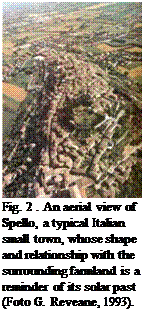Как выбрать гостиницу для кошек
14 декабря, 2021
Gruppo per la storia dell’energia solare (GSES) — Via Nemorense, 18 — 00199 Rome, Italy
E-mail: csilvi@gses. it
This poster presentation aims at introducing to the EuroSun 2008 participants the exhibition “Solar Cities From the Past to the Future: Scientific Discoveries and Technological Developments” opening in Rome in the spring of 2009. Now in its second edition, the first of which took place in 2006 at the Genoa Science Festival, the exhibition will be installed at two prestigious and symbolic venues, the Museum of Roman Civilization and the Central State Archive. In Genoa the message was: for thousands of years, and until just 200 years ago, human beings developed experience in building and operating cities run on solar energy alone. Can this experience be useful in designing the solar cities of the future? Is it possible to return to the use of the sun’s energy for lighting, heating and cooling buildings, for producing electricity, fuels, and construction materials for the cities of a technologically advanced world? The upcoming event in Rome will continue to explore these and other questions. Solar features of models of houses, baths, villas, preserved at The Museum of Roman Civilization, will be highlighted with the heliodon approach. The thesis that future or modern solar cities have their main roots essentially in the past will be reiterated.
1. Introduction
Renewable solar energy — what the sun sends us every day, the driving force of all forms of life on earth, of the winds and the water cycle, the growth of forests and other biomass — has always been, is and will always be the principal energy source on our planet.
All over the world, people used solar energy alone until barely 200 years ago, when fossil fuels — coal, oil and gas (actually fossilized forms of solar energy) — began to gain sway. Like nuclear fuel, these forms of energy are not renewable and eventually will be exhausted.
The use of renewable solar energy is thus an age-old experience marked by fundamental discoveries that made it possible to build cities that ran on solar energy alone, ranging from the discovery of fire, which enabled humans to use the solar energy stored in forest wood and other forms of biomass, to the discovery of agriculture and the birth of the first human settlements. The ancient Greeks’ discovery that streets and buildings can be oriented so as to exploit the sun’s light and heat directly and naturally gave birth to solar architecture. The Greeks’ idea was built upon by the Romans, as codified by Vitruvius in De Architectura, and handed down for centuries.
These discoveries characterize what I would call the primitive or ancient solar age. Though we take them for granted today, they are still of the greatest importance in our daily lives. It’s as if an ancient renewable-solar-energy soul were living on in the cities of our modern world, nearly forgotten and not accounted for
If our forbearers were able to build and run cities with renewable solar energy alone for thousands of years, is it not possible for us to do so in the future? This question was raised explicitly in the 1st edition of the exhibition “Solar Cities From the Past to the Future: Scientific Discoveries and Technological Developments” promoted and organized by the Italian Group for the History of Solar Energy (GSES), and the “Italian National Committee ‘The History of Solar Energy’” (CONASES), a multi disciplinary non profit entity established in 2006 by the Italian Ministry for Cultural Heritage and Activities. The exhibition was held during the Genoa Science Festival at the Doria Pamphilj Prince’s Palace from October 26 to November 7, 2006 [2][3].
 |
 |
The exhibition traced the evolution of the Italian human habitat from antiquity to the present day and with a look to the future. It recounted the changes in cities, architecture and energy and food — supply infrastructure, and the scientific discoveries and technological developments that marked the major stages in their history, for instance the Romans’ introduction of flat window glass 2000 years ago [1].
Visitors to the exhibition at the Prince’s Palace were able to explore solar city past, present and future with the aid of more than 40 posters, various videos, seminars and conferences. A brief video report of the exhibition is available on You Tube [4].
A city of modern or future solar age has its roots in the discoveries and inventions made during the Renaissance and the scientific revolution. One example of the progress made over the past five hundred years is the giant steps taken in the understanding how light works by great scientists such as Galileo, Leonardo, Newton, Huygens, Maxwell, Planck and Einstein. The explanation of the photoelectric effect by Einstein contributed to underscore other aspects of the structure of the atom, the nature of light and the electrical origin of the cohesive forces in molecules and matter. All this has opened fascinating prospects for the use of direct solar energy in the modern or future solar age, from solar cells with efficiency ratings of 50% or more to smart glass and photon solar architecture and city planning.
Will scientific discoveries and technological developments allow us to build the solar city of the future, a city powered solely by solar energy?
A thesis presented in Genoa by GSES and CONASES was that to bring the modem solar city into being we must intelligently combine and integrate the experience gained by the ancient cities — not only in terms of technical know-how, but also of art, culture, relations and communication — with the many solutions made available by the scientific discoveries and extraordinary technological developments of the past two hundred years, especially the most recent decades. In other words, as suggested by Norbert Lechner, “Use the best of the old and the best of the new.” [5]. This thesis will be reiterated in Rome’s exhibition.